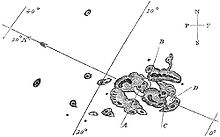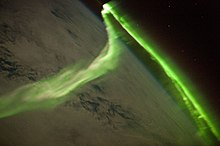Most Computers now days really aren't usually set up anymore for doing machine language without going through another language. As systems get more complicated computer designers tend to do this. So, we have to go back to something like a Commodore 128 to actually do this more easily. So, you can see how antiquated this all is to try to actually get down to machine code in an easy way. There might be other ways to get down into machine code but they are mostly older machines that can easily do this now today.
One day when everyone is driving electric cars, if we have an EMP from the sun it will be nice if someone has a gasoline reciprocating engine or diesel powered vehicle because all the electrics won't work anymore when this happens if it is something like the Carrington event. Here is the man with the old Commodore 128.
https://www.youtube.com/watch?v=kmE5AHrzYgY
Yes. And if a Carrington event happened today not only would all electric vehicles stop working but all magnetic computer hard drives would fry and never work again too. So, electronics on the side of the planet that was hit by the Carrington event from the Sun would fry almost everything electrical that wasn't underground at least 10 feet under dirt or cement.
By the way, here is some information on the Carrington event because it is not an IF event that will occur again it is only a WHEN? event.
begin quote from:
People also ask
Web results
Carrington Event
The Carrington Event[1] was a powerful geomagnetic storm on September 1–2, 1859, during solar cycle 10 (1855–1867). A solar coronal mass ejection (CME) hit Earth's magnetosphere and induced the largest geomagnetic storm on record. The associated "white light flare" in the solar photosphere was observed and recorded by British astronomers Richard Carrington and Richard Hodgson. The storm caused strong auroral displays and wrought havoc with telegraph systems. The now-standard unique IAU identifier for this flare is SOL1859-09-01.
A solar storm of this magnitude occurring today would cause widespread electrical disruptions, blackouts, and damage due to extended outages of the electrical grid.[2][3] The solar storm of 2012 was of similar magnitude, but it passed Earth's orbit without striking the planet, missing by nine days.[4]
Carrington flare[edit]
Just a few months before the solar maximum on 1860.1, during the 10th solar cycle,[5] many sunspots appeared on the Sun from August 28 to September 2, 1859. Bright and variable sky colors were observed in the evening on August 28 and subsequently reported in various newspapers in the New England area.[6] On August 29, southern auroras were observed as far north as Queensland, Australia.[7] Just before noon on September 1, the English amateur astronomers Richard Carrington and Richard Hodgson independently recorded the earliest observations of a solar flare.[8] Carrington and Hodgson compiled independent reports which were published side by side in the Monthly Notices of the Royal Astronomical Society, and exhibited their drawings of the event at the November 1859 meeting of the Royal Astronomical Society.[9][10]
The flare was associated with a major coronal mass ejection (CME) that travelled directly toward Earth, taking 17.6 hours to make the 150 million kilometer (93 million mile) journey. Typical CMEs take several days to arrive at Earth, but it is believed that the relatively high speed of this CME was made possible by a prior CME, perhaps the cause of the large aurora event on August 29 that "cleared the way" of ambient solar wind plasma for the Carrington event.[8]
Because of a geomagnetic Solar Flare Effect ("magnetic crochet")[11] observed in the Kew Observatory magnetometer record by Scottish physicist Balfour Stewart, and a geomagnetic storm observed the following day, Carrington suspected a solar-terrestrial connection.[12][page needed] Worldwide reports on the effects of the geomagnetic storm of 1859 were compiled and published by American mathematician Elias Loomis, which support the observations of Carrington and Stewart.[13]
On September 1–2, 1859, one of the largest geomagnetic storms (as recorded by ground-based magnetometers) occurred. Auroras were seen around the world, those in the northern hemisphere as far south as the Caribbean; those over the Rocky Mountains in the U.S. were so bright that the glow woke gold miners, who began preparing breakfast because they thought it was morning.[8] People in the northeastern United States could read a newspaper by the aurora's light.[14] The aurora was visible from the poles to low latitude areas such as south-central Mexico,[15][16] Queensland, Cuba, Hawaii,[17] southern Japan and China,[18] and even at lower latitudes very close to the equator, such as in Colombia.[19] Estimates of the storm strength range from −800 nT to −1750 nT.[20]
Telegraph systems all over Europe and North America failed, in some cases giving telegraph operators electric shocks.[21] Telegraph pylons threw sparks.[22] Some telegraph operators could continue to send and receive messages despite having disconnected their power supplies.[23]
On Saturday, September 3, 1859, the Baltimore American and Commercial Advertiser reported:
In 1909, an Australian gold miner C. F. Herbert retold his observations in a letter to The Daily News in Perth:
In June 2013, a joint venture from researchers at Lloyd's of London and Atmospheric and Environmental Research (AER) in the United States used data from the Carrington Event to estimate the cost of a similar event in the present to the U.S. alone at $0.6–2.6 trillion,[2] which at the time equated to roughly 3.6% to 15.5% of annual GDP.
Other evidence and similar events[edit]
Ice cores containing thin nitrate-rich layers have been analysed to reconstruct a history of past solar storms predating reliable observations. This was based on the hypothesis that solar energetic particles would ionize nitrogen, leading to the production of NO and other oxidised nitrogen compounds, which would not be too diluted in the atmosphere before being deposited along with snow.[26] Beginning in 1986, some researchers claimed that data from Greenland ice cores showed evidence of individual solar-proton events, including the Carrington event.[27] More ice core work casts significant doubt on this interpretation, and shows that nitrate spikes are likely not a result of solar energetic particle events but can be due to terrestrial events such as forest fires, and also correlate with other chemical signatures of known forest fire plumes. Indeed, no consistency is found in cores from Greenland and Antarctica regarding the nitrate events, so that hypothesis is now in doubt.[26][28][29] Other research has looked for signatures of large solar flares and CMEs in carbon-14 in tree rings and beryllium-10 in ice cores, finding such a signature of a large solar storm in 774 CE but finding that such events occur on average only once every several millennia.[30]
Less severe storms occurred in 1921 and 1960, when widespread radio disruption was reported. The March 1989 geomagnetic storm knocked out power across large sections of Quebec. On July 23, 2012 a "Carrington-class" solar superstorm (solar flare, coronal mass ejection, solar EMP) was observed; its trajectory narrowly missed Earth.[4][31]
See also[edit]
- 774–775 carbon-14 spike
- A-index
- K-index
- List of solar storms
- Nuclear electromagnetic pulse
- COBRA, 2020 British TV series imagining an equivalent storm impacting modern Britain



No comments:
Post a Comment